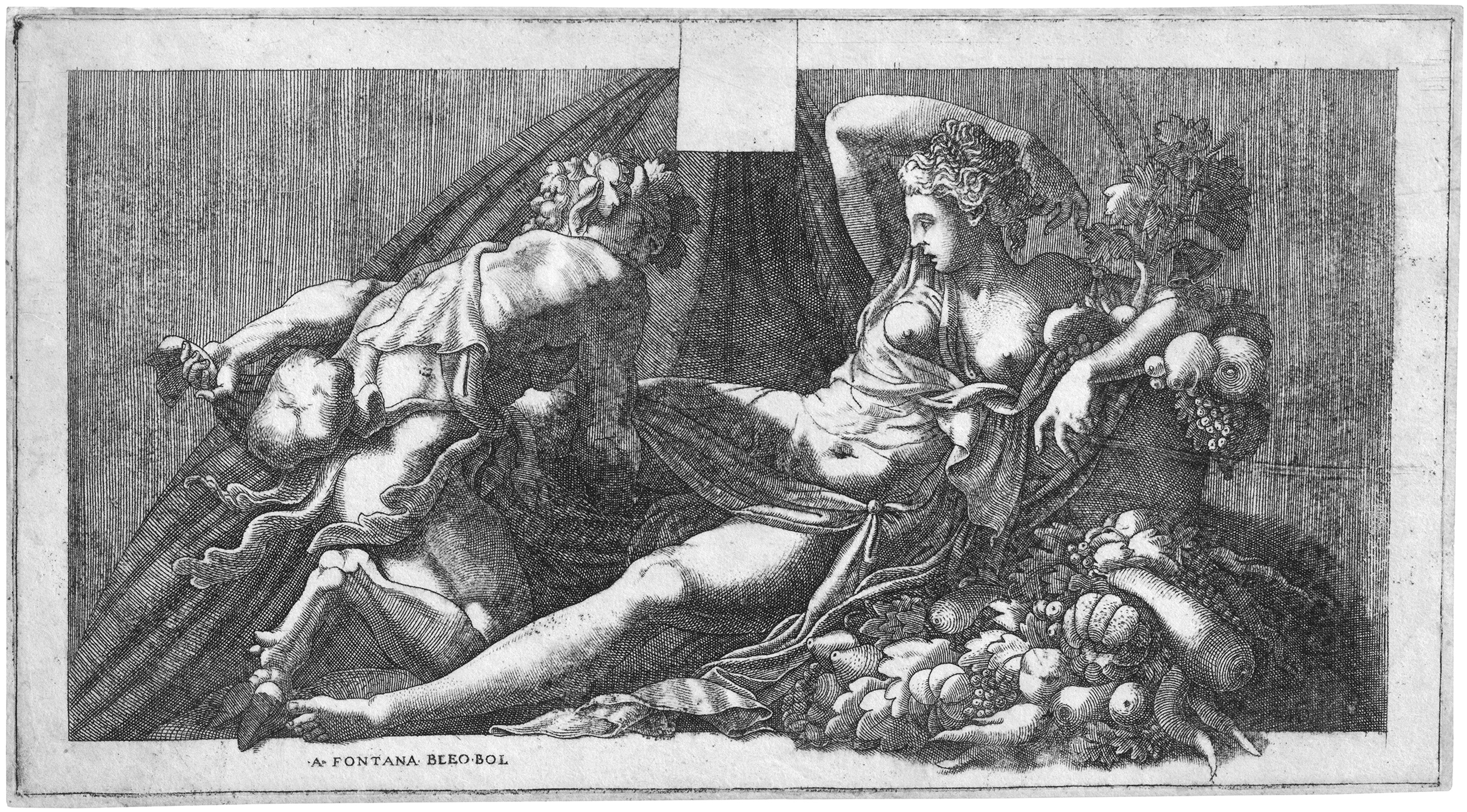Loading the page ...
Giorgio Ghisi
(called Mantovano, 1512–1582, Mantua)
Allegory of Earth’s Fertility (Jupiter and Antiope?). Engraving after Primaticcio. 17.2 x 31.5 cm. B. 52, Bellini 5 II, Boorsch/Lewis A2 II.
Giorgio Ghisi’s impressive engraving showing an allegory of Earth’s fertility is a reproduction in reverse of almost identical size of a drawing by Francesco Primaticcio now in the Albertina Collection in Vienna (pen and ink, greyish-brown wash, 16.2 x 31.2 cm, inv. no. 418). The drawing was in all probability a preparatory study for one of the no longer extant works the Bologna-born Primaticcio produced in the 1550s during the decoration of the Château de Fontainebleau.
In the light of eight other engravings which Ghisi also made after designs by Primaticcio for Fontainebleau, R. E. Lewis suggests that the print can be dated to the 1560s. Suzanne Boorsch was the first to question the traditional attribution of this rare engraving to Giorgio Ghisi – one that was endorsed, among others, by Paolo Bellini in his monograph on the artist. Her scepticism is founded in the engraver’s freer style, the lines being drawn with greater precision and agility than in Ghisi’s known works from this period. The impression of the print in the collection of the Metropolitan Museum, New York, is now attributed to the master FG, who was active around the middle of the 16th century and also engraved various prints after Primaticcio.
Furthermore, researchers have different theories about the iconographical interpretation of the picture. The assumption has traditionally been that it shows a scene from Greek mythology in which Jupiter in the guise of a satyr is in about to seduce the beautiful Antiope. However, in his monograph on Ghisi published in1998 Paolo Bellini points out that the plants and fruits placed prominently around the female figure, which are not traditionally associated with Antiope, are more likely to be an allegory of Earth’s fertility, his suggestion being that the figure portrayed is the goddess Pomona. The lack of any classical attributes of Jupiter, which would make it possible to identify the cloven-hooved satyr with the father of the gods, is at odds with any notion that this might be a depiction of an erotic encounter with Antiope.
Beyond all dispute, however, are the great skill and technical finesse with which the engraver has rendered the delightful scene. The print is remarkable for the delicate, extremely accurate linework and the refined graphic surface pattern of the tight and varied hatching. An astonishing detail is provided by the shape of the woman’s hands and the position of her fingers, which form a mirror image of each other.
A superb, contrasting and striking impression with thread margins around the deep and partly inky platemark. Minor staining and defects, an unobtrusive printer’s crease on the right, otherwise in excellent condition. With an unknown die stamp at the bottom right (not in Lugt).
Contact us for further information